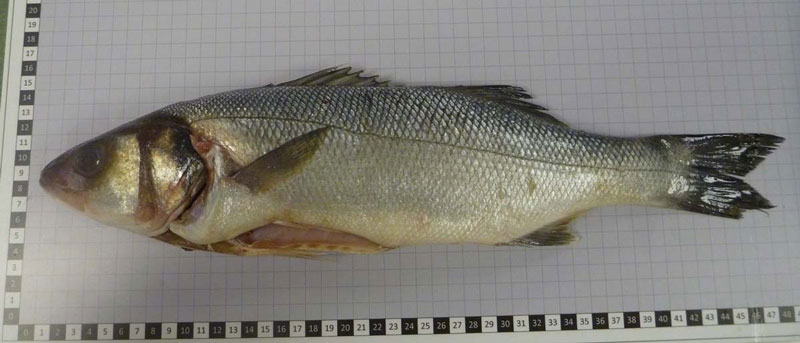European Seabass
Dicentrarchus labrax

European seabass is a member of the family, Moronidae. The name Dicentrarchus, is due to the presence of two dorsal fins. They are a gonochoristic species, which means that they maintain the same sex throughout their entire lifetime. Females generally spawn from December to March in the Mediterranean Sea and up to June in the Atlantic Ocean. They feed on small fish such as cephalopods (squid and octopus), polychaetes (worms) and crustaceans (e.g. crabs).
Distribution & Habitat: North Atlantic from Norway southward to Morocco and the Canaries, also Mediterranean and Black Sea, on various kinds of bottoms, also in brackish waters and occasionally rivers. Elsewhere, southward to Senegal.
D. labrax have vomerine teeth in a crescentic band, without a backward extension on midline of roof of mouth. Scales in lateral line 52-74 (mode 70). Colour: silvery, bluish or greenish on the back. Young with some dark spots on upper part of body but adults never spotted. A diffuse black spot on the edge of opercle.
Size: to about 1 m SL.
Data sources
- http://http://species-identification.org/species.php?species_group=fnam&id=1846
- http://www.fishbase.org/summary/Dicentrarchus-labrax.html
Specimen details
The specimen was caught by the MFV Guardian Angel LK272 on the 5th January 2014, handed in by skipper Michael Henderson.
Estimated position: Lat: 61N, Long: 000’40W (Stat Square: 50E9)
Fish details: Total length = 48cm, Fork length = 43cm
View the Discovery Zone Map.